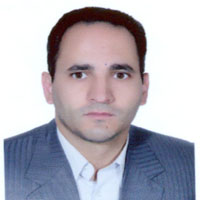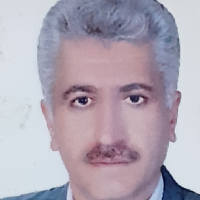Features of media literacy education curriculum in the second primary
Given the importance of media literacy education to children in the curricula of many schools around the world and the gaps in media literacy education in Iran as well as the emphasis of various studies on using learning-based methods based on information-processing models and social learning in media literacy education, the question arises as to what the characteristics of media literacy curriculum elements are according to previous studies in the field of media literacy education. The aim of the present study was to determine the characteristics of the second primary media literacy curriculum elements for functional consuming(FC), critical consuming(CC), functional presuming(FP), and critical presuming(CP) media.
This research was conducted using mixed-methods design (qualitative and quantitative). In the first stage, to identify the features of the media literacy curriculum of the second primary school, the qualitative method of synthesis research (qualitative Meta-Synthesis) was used, and in the next stage, to examine the opinion of experts from the descriptive-survey method and to evaluate the effect of program implementation, a quasi-experimental pre-test-post-test design with a control and experimental group was used. The statistical population of this study consisted of three groups, A) The studies published in the field of media literacy education were in local and international scientific databases; out of 4309, 18 related documents in the field of media literacy were purposefully selected as samples, B) In the initial validation section of the project, 15 specialists were purposefully selected (with criteria of expertise and experience in the field of media literacy education) from the statistical community of instructors and curriculum planning specialists in the field of media literacy as a sample, and C) In the quantitative part of the statistical population, the students of the second primary school in Hamedan in the academic year of 2019-2020 were included who were selected as a research sample using the multi-stage random cluster sampling method and consisted of a total of 63 sixth-grade female students. In order to analyze the data, to extract information from research and to analyze and combine the findings in determining the characteristics of the curriculum, the content analysis method was used via coding. At this stage, in addition to using the CASP tool in selecting appropriate study units, to ensure the coding method, in addition to using the researcher self-review technique, two experts in the field of communication and curriculum were used to re-codify the findings. In the second stage, using a researcher-made questionnaire, the data obtained from the survey to validate the curriculum were evaluated with a CVR coefficient. In the third stage, in order to analyze the data obtained from the researcher-made tests (functional evaluation, parent evaluation and self-evaluation) in four levels of functional consumption, critical consumption, functional prosumption, and critical prosumption, according to the fact that the data does not have a normal distribution in the pre-test and post-test, the Uman-Whitney test was used.
Findings of the research in the meta-analysis section indicated characteristics such as attention to critical approach, critical media literacy, cognitive media literacy and new media literacy, and the basics of the philosophy program for children in the basics element; Acquisition and promotion of media consumption indicators included (fostering caring thinking), critical media literacy (fostering critical thinking) and producing media messages (fostering creative thinking) in the target element; Attention to cognitive, emotional, aesthetic and moral dimensions, students' life experiences in the face of different media, components emphasized in media literacy theories and in combination with other courses were included in the content element; Attention to discussion and participation in classroom community of inquiry, research-oriented, based on personal (individual) patterns, as well as the use of integrated methods were considered in the method element; Emphasis on discussion, attention to different cognitive, emotional and behavioral dimensions, use of different evaluation tools as well as metacognitive self-evaluation were the elements of media literacy curriculum evaluation in the second primary school. In the field of validation according to experts, due to the higher CVR coefficient obtained in all items of the minimum acceptable coefficient for 15 people (0.49), the features mentioned in the curriculum of the second primary school were confirmed. In the study of the effect of the implemented curriculum on media literacy competencies of second primary school students, the results of Mann-Whitney post-test showed that the effect of the experimental group was significant at the confidence level of 0.95 (P = 0.000, Z = -5.93).
Combining library studies, experimental designs, and interviews with experts in previous studies, as well as validating the features extracted by experts in the field of media literacy training and model effectiveness in implementation suggests a curriculum during which students form a research community to find, build, and engage in media messages involving positive exchange and participation (instead of a competitive environment) in challenging content related to media literacy indicators and results in the cultivation of thoughts based on non-hostile reflection, an increased enjoyment stemming from the ability to read and deeply understand media messages based on dialogue, the development of creativity while creating common perceptions, adherence to ethical principles such as tolerance and acceptance of ambiguities and in general grounding and promoting media literacy and self-leadership through cultivating a variety of caring, critical and creative thinking abilities.
- حق عضویت دریافتی صرف حمایت از نشریات عضو و نگهداری، تکمیل و توسعه مگیران میشود.
- پرداخت حق اشتراک و دانلود مقالات اجازه بازنشر آن در سایر رسانههای چاپی و دیجیتال را به کاربر نمیدهد.





